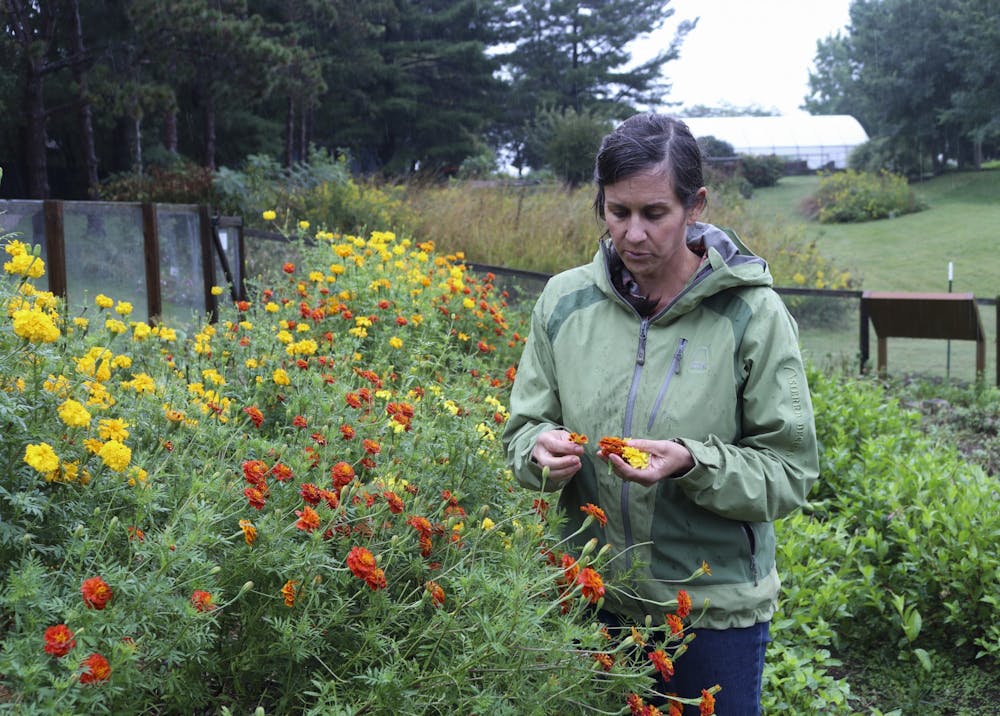A molecular biologist and a textile artist may not appear to have much in common, but both are helping bridge the divide between scientific research and the humanities at IU.
Justin Kumar, an IU biology professor, and Carissa Carman, an Eskenazi School of Art, Architecture + Design senior fibers lecturer, both use unconventional methods to connect with audiences and produce innovative research.
Kumar runs the Kumar Lab where he and his students use fruit fly eyes as models to study eye development by investigating their cellular makeup. Studying genetic mutations in fly eyes can help researchers understand eye defects in humans, Kumar said, because some genes in fly eyes are similar to human eyes.
Kumar and his students take microscopic photographs comparing the eyes of flies with normal and mutated genes. Kumar said he uses photography to communicate his research findings on eye development and his photos have featured on the cover of 15 scientific journals, including the Proceedings of the National Academy of Sciences.
“Although most people might not find fruit flies to be gorgeous animals, to me it's the most beautiful thing to look at,” Kumar said. “I can stare at my fruit flies under a microscope for hours on end.”
Kumar said combining biology and photography has helped captivate the interest of readers of his research.
“We colorize our photos in ways to make it really visually appealing so people want to look at them and want to read the paper,” Kumar said. “If you're trying to appeal to a broad range of readers, show them a picture and they can instantly understand.”
Kumar said he sees parallels between science and literature in research.
“As you're writing it free flows, and then you have this brilliant thought about how to take the story in a new direction,” Kumar said. “That's what research is.”
Carman researches ways to sustainably use flowers to produce colors for fabrics. She said she considers her entire artistic practice as her research. Carman said she identifies as both an artist and a researcher.
Carman co-leads the Color Field Project where she and her students grow beds of primary colored flowers to experiment different ways to extract and dye fabrics colors. The project aims to cultivate non-toxic, ethical art practices, Carman said.
“I have to research materials to understand how they work, and then I have to see how my creative output can apply them -- technically and conceptually,” Carman said.
Colors from flowers are often extracted through diffusion, like a tea bag in hot water, so one method Carman said she studies is adjusting the temperature and acidity of water to achieve different shades.
Carman said her methods are then embodied in the final art product so that people who interact with her artwork can experience her research for themselves.
While not a scientist, Carman said her work benefits from collaborations with scientists. Carman said she teaches her students not to view their careers as black and white, but to value multidisciplinary thinking.
“Someone can give you different perspectives and challenge you,” Carman said. “But for me, that's where life gets really juicy— when it's you following a path that maybe you didn't know existed or you created yourself.”
CORRECTION: A previous version of the story misspelled Carman’s name.






